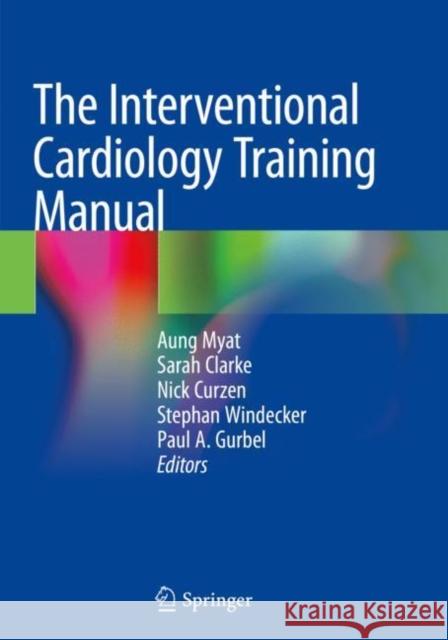The Interventional Cardiology Training Manual » książka



The Interventional Cardiology Training Manual
ISBN-13: 9783319716336 / Angielski / Miękka / 2018 / 537 str.
The Interventional Cardiology Training Manual
ISBN-13: 9783319716336 / Angielski / Miękka / 2018 / 537 str.
(netto: 383,36 VAT: 5%)
Najniższa cena z 30 dni: 346,96
ok. 22 dni roboczych.
Darmowa dostawa!
"It should be a book that is on the shelves of any cardiac catheterization laboratory and accessible not just to doctors but all staff that work within the cath lab. ... Would I recommend it for my local library? Clearly yes, as well as recommending it to junior staff and fellows, which was the main reason the book was produced." (Michael Rees, RAD Magazine, January, 2020)
"This book is most appropriate for cardiovascular fellows undertaking subspecialty training in interventional cardiology. ... This is a comprehensive yet clear guide to coronary intervention at all levels of complexity and establishes guidelines that are used in leading cardiac centers." (Riin S Kadakia, Doody's Book Reviews, January 04, 2019)
Coronary Heart Disease.- Clinical Assessment of Coronary Heart Disease.- Non-Invasive Imaging Assessment of Coronary Heart Disease.- Left Heart Catheterisation.- Left Heart Catheterisation – Vascular Access.- Right Heart Catheterisation.- Radiation Exposure and Safety.- Planning Coronary Intervention – The Golden Rules.- Guide Catheters and Guidewire Selection.- Balloon Technology.- Stent Technology.- Adjunctive Pharmacology.- Adjunctive Technologies for Coronary Intervention.- Intracoronary Imaging.- Physiologic Coronary Lesion Assessment.- Percutaneous Coronary Intervention – STEMI.- Percutaneous Coronary Intervention – NSTEMI and Unstable Angina.- Percutaneous Coronary Intervention – Stable Ischemic Heart Disease.- Percutaneous Coronary Intervention – Left Ventricular Systolic Dysfunction. - Percutaneous Coronary Intervention – Special Considerations in Women.- Percutaneous Coronary Intervention – Special Considerations in the Elderly, Diabetes Mellitus and Renal Dysfunction. - Stent Thrombosis.- Cardiogenic Shock and Mechanical Circulatory Support.- Out-of-Hospital Cardiac Arrest. - Mechanical Complications of Acute Myocardial Infarction.- Contemporary Treatment of Coronary Bifurcation Lesions.- Left Main Coronary Artery Intervention.- Chronic Total Occlusions.- Multivessel Coronary Artery Disease.- Secondary Percutaneous Revascularisation after Coronary Artery Bypass Surgery. - In-Stent Restenosis. - Percutaneous Coronary Intervention. – Management of Complications.- Bleeding Associated with Angiography and Percutaneous Coronary Intervention.
Dr Aung Myat is an NIHR Academic Clinical Lecturer in Interventional Cardiology and an Honorary Interventional Cardiology Fellow at the Brighton and Sussex Medical School and Sussex Cardiac Centre. He has significant interest in medical education and clinical research in all aspects of coronary heart disease and acute coronary syndromes. He is a Section Editor for Education in Heart, Heart, BMJ Journals and is on the Editorial Advisory Board for Oxford Medicine Online produced by Oxford University Press.
Dr Sarah Clarke is the President of the British Cardiovascular Society and a Consultant Interventional Cardiologist at Papworth Hospital, Cambridge, UK with an interest in CTO intervention. She is also Clinical Director for Strategic Development planning the new Royal Papworth Hospital and leading local (STP) and national (GIRFT) innovation and service development. She is Councillor to the Board at the ESC, international member of the Women in Cardiology section of the ACC and European Representative of the Association of International Governors at the ACC. She is the Editor for Education in Heart, Heart Journal, chairs the e-communication committee at the ESC and is the international editor of the ACC e-newsletter.
Prof Nick Curzen is a Consultant Cardiologist and Honorary Professor of Interventional Cardiology at the University of Southampton. He is National Lead for Research for BCIS, and in the past has served as Honorary Secretary for BCIS. He has been an expert adviser to the UK Prime Minister’s Directive Unit and to the National Institute of Health and Clinical Excellence. He is Chief Investigator for RIPCORD 2 and the FORECAST randomised trials and also led RIPCORD 1 and FFRCT RIPCORD. His other research interests lie in personalised antiplatelet therapies and in computer modelling of stents and TAVI.
Prof Stephan Windecker currently serves as chief of cardiology and director of invasive cardiology at the Swiss Cardiovascular Center Bern, Switzerland. He is also co-director of clinical research in the department of cardiovascular diseases. He is involved in continuous medical education and teaching of medical students, house staff, fellows, and tutors for interventional cardiologists. Prof Windecker is currently President-Elect of the European Association of Percutaneous Coronary Interventions.
Prof Paul Gurbel is board-certified in internal medicine, cardiovascular disease, and interventional cardiology by the American Board of Internal Medicine. He is Professor of Medicine at Johns Hopkins University School of Medicine and Adjunct Professor of Medicine at Duke University School of Medicine. He is the Director of Cardiovascular Research and Interventional Cardiology for the Inova Health System and Director of the Inova Center for Thrombosis Research and Drug Development. His research has focused on defining the effects of antiplatelet agents, antiplatelet agent development, and understanding the relation of platelet reactivity to ischemic event occurrence in patients undergoing stenting. His lab instituted the field of personalized antiplatelet therapy based on phenotypic and genetic analyses.
This textbook is a readily accessible educational tool for all fellows undertaking subspecialty training in interventional cardiology, while also serving as a refresher to early career interventional cardiologists. The key objective is to equip the reader with an evidence-based expert-led resource focussed primarily on pre-procedural planning, peri-procedural decision-making, and the salient technical aspects of performing safe and effective coronary intervention, the intention being to support the therapeutic decision-making process in the emergency room, coronary care unit or cath lab in order to optimize patient outcome.
1997-2026 DolnySlask.com Agencja Internetowa
KrainaKsiazek.PL - Księgarnia Internetowa









